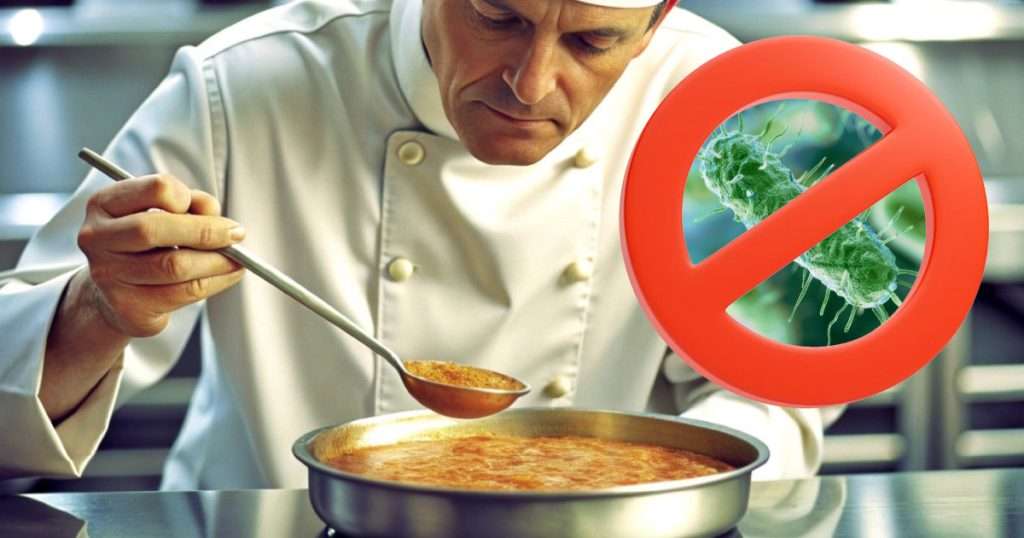Listeria is a type of bacteria that can cause foodborne illness, and it’s important to cook your food properly to ensure it’s safe. Knowing how long to cook to kill Listeria is crucial for preventing this harmful bacteria from making you sick. Proper cooking methods can eliminate the risk and keep your meals safe.
What is Listeria?
Listeria monocytogenes is a bacteria that can cause a serious illness called listeriosis. It can be found in raw meats, unpasteurized dairy products, and some ready-to-eat foods. Listeria is unique because it can grow in cold environments, such as refrigerators, which makes it more challenging to control compared to other bacteria.
Listeria infections can be especially risky for pregnant women, newborns, the elderly, and people with weak immune systems. Symptoms include fever, muscle aches, and stomach problems. Cooking food properly and handling it safely can help prevent these infections.
Does Heat Kill Listeria?
Heat is a reliable way to kill Listeria bacteria. Here are some key points about how heat affects Listeria:
- Effective Temperature: Cooking food to an internal temperature of 165°F (74°C) will effectively kill Listeria. This temperature is high enough to destroy the bacteria quickly and safely.
- Boiling Point: Boiling food can also kill Listeria. The bacteria are destroyed at the boiling point of water, which is 212°F (100°C).
- Lower Temperatures: Cooking at lower temperatures requires a longer time to ensure that Listeria is killed. For instance, cooking at 160°F (71°C) must be done for at least 3 minutes to be effective.
- Reheating Foods: Reheating leftovers to 165°F (74°C) ensures that any Listeria present is eliminated. This is crucial for keeping previously cooked foods safe.
- Thorough Cooking: Even if you cook food at a high temperature, it’s important to ensure the food reaches this temperature throughout. Uneven cooking can leave parts of the food at unsafe temperatures.
Cooking Methods and Tips to Kill Listeria
To ensure your food is free from Listeria, follow these cooking methods and tips:
Effective and Thorough Cleaning
Before you start cooking, it’s important to clean your kitchen and utensils properly. Wash your hands, cutting boards, and knives with hot, soapy water. Clean all surfaces and tools that will touch food to remove any bacteria. This prevents the spread of Listeria and other harmful microbes.
Separation of Foods to Prevent Cross-Contamination
Avoid cross-contamination by keeping raw meats, seafood, and poultry separate from ready-to-eat foods like vegetables and fruits. Use different cutting boards and utensils for raw and cooked foods to stop bacteria from raw items from contaminating ready-to-eat foods.
Thorough Cooking
Cook all meats, poultry, and seafood to the recommended internal temperatures. Use a food thermometer to check the internal temperature of your food. For instance, poultry should reach 165°F (74°C), while ground meats should also be cooked to 160°F (71°C). This ensures that Listeria and other bacteria are effectively killed.
Adequate Chilling
Chill your food promptly after cooking to prevent bacteria growth. Store leftovers in the refrigerator at 40°F (4°C) or below. Check that your refrigerator is at the right temperature and don’t leave perishable foods out at room temperature for more than 2 hours. Proper chilling slows down bacterial growth and keeps your food safe.
Proper Storing of Food
Storing food properly is crucial to avoid Listeria contamination. After cooking, put all perishable foods in the refrigerator or freezer as soon as you can. Refrigerate leftovers within 2 hours, or 1 hour if it’s hotter than 90°F (32°C). Keep your fridge at or below 40°F (4°C) and your freezer at 0°F (-18°C) to keep food safe.
Keep track of how long different foods can be stored. For example, cooked meats should be eaten within 3 to 4 days if kept in the refrigerator. For longer storage, freeze foods to stop bacteria from growing and keep them fresh.
How to Prepare
Proper food preparation helps reduce the risk of Listeria. Always wash fruits and vegetables well under running water before eating or cooking. Use different utensils and cutting boards for raw meats to avoid mixing bacteria. Clean and sanitize surfaces and tools after handling raw ingredients.
Ensure that any ready-to-eat foods are handled with clean hands and utensils. Use a food thermometer to make sure cooked foods reach the right temperatures. Following these steps helps lower the risk of Listeria contamination.
Serving
When serving food, ensure that it is kept at safe temperatures. Hot foods should stay above 140°F (60°C), and cold foods should stay below 40°F (4°C). If you’re serving food at a gathering, keep perishable items on ice or in warming trays to maintain safe temperatures.
Don’t leave food out for too long. Perishable foods shouldn’t sit at room temperature for more than 2 hours. For outdoor events or buffets, keep a close eye on food temperatures to ensure they remain in the safe range. Proper serving practices help to prevent the growth of Listeria and other harmful bacteria.
Keep Your Food Safe from Listeria
Ensuring food safety by understanding how long to cook to kill Listeria is essential for preventing illness. Cooking your food to the correct temperatures, practicing effective food handling, and following proper storage and preparation techniques mean you can significantly reduce the risk of Listeria contamination. Following these practices will help keep you and your loved ones safe from foodborne illnesses and make sure your meals are both safe and enjoyable.

